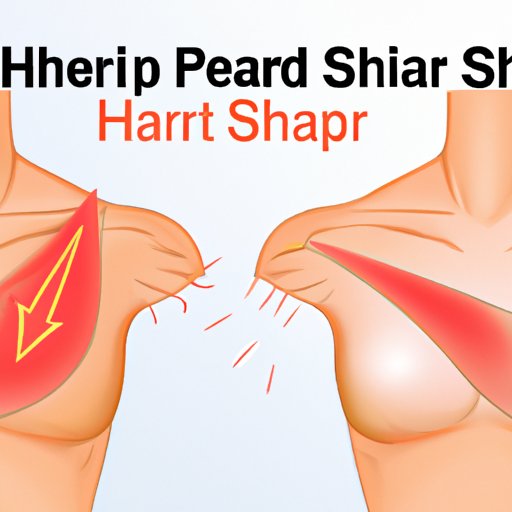
Introduction
Sharp pain under the left breast can be a discomforting and frightening experience. In many cases, it is a symptom of underlying conditions such as heart problems, digestive issues, or musculoskeletal problems. Despite its prevalence, many people often overlook or dismiss the symptom, leading to worse health outcomes. In this article, we will explore the key ways to alleviate sharp breast pain and prevent it from returning.
Step 1: Identify the Cause
It is crucial to identify the underlying cause of sharp pain under the left breast. Ignoring it can lead to serious complications if the cause is left untreated or undiagnosed. One way to identify the cause is to discuss your symptoms with a medical practitioner. They can conduct physical exams, blood tests, or imaging tests to determine the underlying cause.
Step 2: Practice Deep Breathing
Deep breathing exercises can help alleviate sharp pain under the left breast by reducing tension and promoting relaxation. It is vital to take deep breaths regularly, especially when you feel the pain. You can practice simple breathing exercises such as inhaling slowly and deeply through your nose and exhaling through your mouth.
Another option is to engage in yoga or meditation, which involves breathing exercises and physical postures. These practices are known to promote relaxation, reduce stress, and help alleviate pain.
Step 3: Change the Posture
The position you sit or lie down in can have a significant impact on the intensity of sharp pain under the left breast. Certain positions such as lying on your left side may aggravate the pain. Changing to a different position can help alleviate the pain.
It is advisable to sleep on your right side or sit up straight with your shoulders back to reduce the pressure on your chest. You can also use a pillow to elevate your head to ease the discomfort.
Step 4: Apply a Warm Compress
Applying a warm compress can help relax the chest muscles, reduce inflammation, and alleviate sharp breast pain. You can use a heated pad, hot water bottle, or take a warm bath. Make sure to apply the warm compress for 15-20 minutes at a time and use a temperature that is comfortable for you.
Step 5: Seek Physical Therapy
Physical therapy can help alleviate sharp pain under left breast caused by poor posture or muscle strain. A physical therapist can guide you on exercises and stretches that target the chest muscles, relieve tension, and promote flexibility. They may also recommend massages or ultrasound therapy to alleviate the pain.
Step 6: Take Over-the-Counter Painkillers
If the pain is too severe, taking over-the-counter painkillers like ibuprofen or aspirin can help alleviate the symptoms. However, before taking any medication, it is important to read the label instructions and consult with a medical practitioner. Some painkillers can cause serious side effects and may not be recommended for everyone.
Step 7: Wear a Supportive Bra
A supportive bra can help alleviate inflammation, soreness, and sharp breast pain by providing additional support and reducing the pressure on the chest. When choosing a bra, look for one with supportive cups, wide straps, and a snug but not tight fit. Avoid underwire bras that can irritate the chest muscles and cause discomfort.
Conclusion
Sharp pain under the left breast can be a distressing experience, but there are many ways to alleviate its symptoms. Identifying the underlying cause, practicing deep breathing exercises, changing the posture, applying a warm compress, seeking physical therapy, taking over-the-counter painkillers, and wearing a supportive bra are some of the key remedies that can help alleviate the symptoms. If the pain persists or worsens, it is important to seek medical attention. Follow the suggestions in this article based on your doctor’s recommendations, and don’t ignore this symptom.





